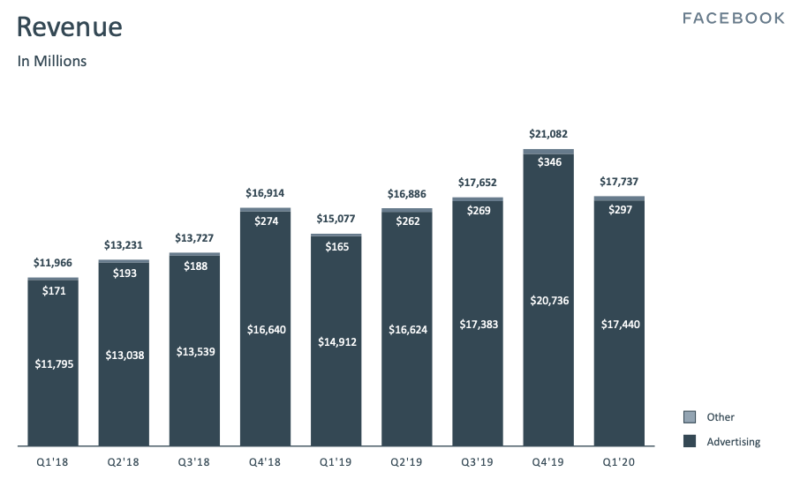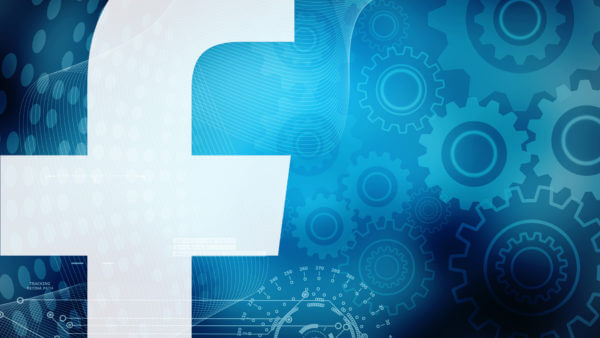Facebook Q1 earnings: Investors excited about ‘signs of stability’ in ad revenues
Flat is the new growth.
Beating diminished expectations. To say that Wall Street expectations have been lowered by the economic fallout from the pandemic might be the understatement of the quarter. Any positive news now is being greeted with enthusiasm by the market in the hope that the recovery will come quickly after the lockdowns end, although there’s considerable debate among economists about how long it will take to recover.
Facebook reported $17.7 billion in revenue, which was up approximately 17% from a year ago. Analysts had expected $17.4 billion in topline revenue for Q1. However earnings-per-share fell somewhat short of expectations, as with Google’s results yesterday.
Facebook Q1 2020 revenue

Other key Facebook stats reported today:
- Facebook daily active users – 1.73 billion, up 11% year-over-year.
- Facebook monthly active users – 2.60 billion, up 10%.
- Advertising as a % of total revenue: 98%
- ARPU: $6.95 down from $8.52 last quarter (per CNBC calculation)
- Headcount – 48,268, up 28% from a year ago
April revenues flat. Facebook stated in its earnings release that it saw a sharp reduction in demand for advertising and a related decline in ad prices, which has been confirmed by third party data. In terms of ad-revenue stabilization, Facebook said, “After the initial steep decrease in advertising revenue in March, we have seen signs of stability reflected in the first three weeks of April, where advertising revenue has been approximately flat compared to the same period a year ago, down from the 17% year-over-year growth in the first quarter of 2020.”
Given the volatility in the advertising market Facebook said it would not provide revenue guidance for the duration of the year.
Why we care. One can be wary of these results or celebrate them as a win for Facebook and the digital ad market as a whole, given the current uncertainty and negative indicators. Just like the other, big tech companies, Facebook has seen usage growth and improved engagement — people at home all day are (re)turning to social media to stay connected — but those metrics have not translated into ad revenue growth. However, “stability” in this market is the new growth.
There have also been multiple anecdotal reports that, given lower CPMs/CPCs and diminished competition, this is a great time to advertise on Facebook. I’ve also heard from some marketers recently that B2B campaigns on Facebook are outperforming LinkedIn.



